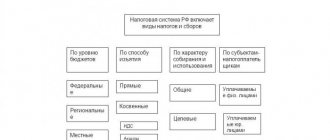What the law says
The working week cannot exceed 40 hours - this is stated by Russian legislation. Moreover, this is true for both a five-day and a six-day working week. For the first case, the working day is limited to 8 hours, but in the second case, each employer sets the regime individually, taking into account the fact that the day before the weekend should not exceed 5 hours.
Based on legal standards, other operating modes can be calculated.
But at the same time, a shortened working week may be established for certain categories of employees.
Shortened working week
A shortened work schedule implies that the employee will actually work fewer hours compared to the usual schedule for the same period of time. According to Article 92 of the Labor Code of the Russian Federation, a shortened working week is established for the following categories of persons:
- under 16 years of age (they must work no more than 24 hours a week);
- over 16 years of age, but under 18 years of age (they are required by law to work no more than 35 hours);
- having a disability of 1 or 2 groups (the work activity of these persons should not exceed 35 hours);
- workers whose working conditions are determined to be dangerous or harmful to health (in this case, the work week cannot exceed 36 hours).
This list is not final. It can also be supplemented with facts from federal legislation. For example, the reduced working week for teaching staff is 36 hours, and for medical workers - 39 hours. At the same time, there is a decree of the Government of the Russian Federation, which presents a list of specialties of medical workers and types of medical institutions for which the working week has been reduced to an even greater extent.
Part time
The Labor Code states that several options for organizing work in this mode are possible:
- Reduce the length of the working day or shift by certain hours (all working days of the week are reduced).
- Reduce the number of working days per week, but still maintain the usual working hours or shifts.
- Reduce the duration of daily work by a fixed number of hours, while reducing the number of working days in the week.
However, one should not confuse part-time work with shortened work, which is referred to in Article 93 of the Labor Code of the Russian Federation and which is established for certain categories of citizens. For example, for persons under sixteen years of age, disabled people, students, workers employed in hazardous areas of production, etc. For such employees, reduced working hours are the full norm. If you are interested in any information regarding your rights or working conditions, you can always read the Labor Code with comments. There the explanations are presented in detail and in an accessible form.
Payment Features
A work week of this type will be paid as a full week, but subject to some exceptions. A shortened working week according to the labor code for minor workers will be paid according to the time actually worked or the amount of work performed. In other words, work is paid in proportion to these indicators.
But, despite legal regulations, the employer has the right to make additional payments to its employees who are working short-time. In particular, he can pay for work at the same rate that full-time employees receive, but under certain conditions.
How should additional funds be paid if an employee has a reduced work week? Payment must be made as remuneration for overtime work.
How does an incomplete week despair of a shortened one?
In some cases, an employee may be given a part-time work week. But this concept differs significantly from the concept of “shortened working week”.
With an incomplete week, payments are made based on the time worked and work performed, and with a reduced time, the work week can be considered full for certain individuals and paid in full. Further, to assign a part-time work week, mutual consent of both parties or the employee’s initiative is sufficient; a shortened week is provided to a specific group of people.
An incomplete week can be introduced if the employer is contacted:
- an employee in a situation;
- one of the parents of a child under 14 years of age;
- one of the parents of a disabled child under 18 years of age;
- a person who cares for a sick relative, providing a corresponding certificate from a medical institution.
The manager can organize a part-time work week only on the basis of an application from the indicated persons.
At the same time, there should not be an entry in the work book that the employee has a shortened work week or part-time work.
Time sheet for part-time work
Everyone knows that at an enterprise, HR officers keep time sheets. It is then that the accounting department uses when calculating wages. Therefore, the time sheet is one of the main documents for the HR department.
So, it takes into account part-time work at the request of the employee or “25” (according to the State Statistics Committee resolution No. 1 dated January 5, 2004). In this case, we are talking about part-time work, since non-working days during a shortened week will be celebrated as weekends.
Time tracking
Taking into account working hours is the direct responsibility of the employer, and not his right or desire. Although many neglect this fact, thereby violating the requirements of legislative acts.
To keep track of the actual time worked by each employee, a special timesheet of the T-12 form is used, which is approved by a resolution of the State Statistics Committee of the Russian Federation. In addition to the fact that this document has its direct purpose, it can also be taken into account as evidence in litigation under labor law.
Shortened working week in hours:
- Persons under 16 years old – 24 hours.
- Persons from 16 to 18 years old, disabled people of groups 1 and 2 – 35 hours.
- Persons working under the influence of negative factors – 36 hours.
If a minor citizen combines study and work, then half of the norm established by law is applicable to him. That is:
- persons under 16 years of age must work no more than 12 hours per week;
- persons from 16 to 18 years old – no more than 17.5 hours per week.
It is necessary to establish a shortened working week, taking into account labor law and federal laws, for the following categories of employees, observing hourly standards:
- For teaching staff – 36 hours.
- For health workers – from 30 to 39 hours.
- For women working in villages – 36 hours.
- For women working in the Far North – up to 36 hours.
As a result, all these facts must be taken into account in the time sheet.
Remuneration for reduced working hours
Receiving fair wages is one of the key interests of the employee. As working hours decrease, the workload decreases, and with it, earnings.
But, again, it is necessary to distinguish between reduced and part-time working hours, since the conditions for accruing funds are not the same.
In the first case, postings are made and funds are accrued as for fully worked time.
But for a part-time employee, wages are calculated in proportion to the hours worked (or the tasks actually completed).
Minors
To correctly calculate earnings for this category, you should pay attention to Art. 271 of the Labor Code of the Russian Federation, as well as the form of payment of funds at the enterprise.
The law establishes the ability of the employer to make additional wages on the basis of time-based wages up to the level of the full duration of daily work.
Also, the rules for calculating wages must be reflected in the labor and collective agreement.
Working disabled people
This category performs official duties on an individual basis and to the extent permitted by medical indications.
It follows from this that the reduced threshold for maximum working hours will still be considered normal duration, and accordingly, wages will not change.
In addition to this, the company is obliged to carry out additional accruals and compensation due in accordance with the law and the collective agreement. This is stated in Art. 92 of the Labor Code of the Russian Federation, as well as Art. 23 of the Federal Law “On Social Protection of Disabled Persons in the Russian Federation”. However, this applies to persons with disability groups I and II.
External part-timers
Special attention should be paid to employees combining work in several enterprises. For this category, the conditions of remuneration are established by Art. 284 Labor Code of the Russian Federation. The law states that a part-time worker cannot work more than 4 hours a day. In this case, the salary is calculated in proportion to the time worked.
In all the mentioned cases, for the correct calculation of wages, the enterprise must maintain a working time log.
The document is filled out by an official whose responsibilities include recording, analyzing and calculating working hours.
Employer initiative
The total length of the working week is one of the main conditions in the text of the employment contract. Let's consider the main reasons why the conditions established in the document may change.
According to Article 74 of the Labor Code of the Russian Federation, it is possible to change the initially agreed upon labor conditions in the event of future technological or organizational changes at the enterprise. These include:
- changes in production process technology or in the technology itself;
- regular reorganization of the enterprise;
- other changes.
If the above changes could lead to large-scale layoffs of the workforce, the employer will shorten the work week or introduce part-time work for employees. In this way, jobs can be saved and financial costs can be reduced to some extent.
In this case, it is legally permitted to introduce shortened workdays for a period of up to 6 months. If it is intended to return to normal mode earlier, this issue must be agreed upon with the trade union organization of the enterprise.
If for some reason an employee refuses to return to full-time work, the employment contract with him may be terminated due to staff reduction. And in this case, the employer will have to follow the procedure for dismissal due to reduction, when the employee is paid all the necessary compensation payments.
Procedure for transferring to full-time work
Transfer to full-time work must be carried out in a certain order established at the legislative level or prescribed by the internal documents of the organization. It is prohibited to transfer an employee to full-time work without his consent in writing.
If the initiative comes from the employer, a corresponding order is issued, which is brought to the attention of employees 2 months before the upcoming changes. They must put their signature on the document, which will indicate their consent and awareness.
When the initiative comes from an employee, he writes a statement asking to be transferred to a full-time work schedule. On this basis, management issues an order, and the employee signs as a sign of familiarization with it.
Changes in the schedule are fixed in an additional agreement to the employment contract, which is signed by both the employee and the employer. If the salary changes, this is also taken into account in the document.
Order for transfer to full-time work
The order for transfer to full-time work is drawn up in any form.
It records the following data:
- the date from which the new operating mode is introduced;
- the end date of the changes, if they are of a non-permanent nature;
- an indication of changes in such elements of the labor regime as working day, week, etc.;
- a list of all planned breaks in work.
The order to transfer an employee to full-time work indicates the person who is responsible for monitoring the execution of this order.
Application for transfer to full-time work
An application is submitted if the employee expresses a desire to work full-time. The transfer applies to those employees who are already on staff but work part-time.
As a rule, these are the following persons:
- pregnant women;
- full-time students;
- parents whose child has grown up and does not need increased attention;
- working part-time.
If the grounds for reducing the work schedule become irrelevant, employees fill out an application for transfer to full time.
It contains the following information:
- name of the organization, position and full name of the head;
- request for transfer to full-time work;
- the date from which the worker is ready to start working full-time;
- employee signature.
An application for transfer to full-time employment is written in free form
Decor
A shortened work week at the initiative of the employer requires adherence to strict consistency in registration. Each stage must be documented exclusively in writing.
In order for an organization to establish reduced working hours, it is necessary:
- Issue an order that warns all employees about the change in the working regime. The document must: justify the need to switch to a new regime; list those departments that will work according to the new schedule; specify the specific operating mode. In addition, the document must indicate the start date of work according to the new schedule and the period for which the regime is established. Responsible persons who will notify the team about innovations should be indicated.
- Notify the work team. Employees affected by the innovation must be notified of this two months in advance. Failure to comply with established standards may result in litigation. Notices must be in writing. Each employee must sign for receipt of this notice. If you do not want to sign the notice, you must draw up a corresponding act in the presence of two witnesses.
- Provide information to the labor exchange. Within three days from the date of the decision to establish a new regime in the organization, management must report this fact to the employment center. If this fact is ignored, the organization may be fined.
Registration of part-time work
Sometimes it happens that people need to reduce their time at work for some objective reasons. And they ask the question: “How to apply for part-time work?” It's not difficult at all.
We have already said earlier that initially, by agreement of the parties, a corresponding employment contract can be drawn up. Part-time work is stated in it as the working mode of a certain employee.
In what other cases is the employer obliged to transfer the employee to a reduced work schedule?
Article 93 of the Labor Code of the Russian Federation specifies the following categories of citizens:
- Pregnant women.
- Parent of a child under fourteen years of age. This could be the mother, father, or guardian.
- Persons caring for a sick relative (with a medical certificate).
To switch to a new work schedule, you just need to write an application for part-time work.
In addition, people on parental leave have the right to work on a special, shortened schedule. At the same time, they retain the right to receive social insurance benefits. Moreover, this opportunity is available to both the child’s mother and father, grandmother, grandfather, and guardian, who actually care for the baby (Article 256 of the Labor Code of the Russian Federation).
As we said above, transfer to part-time work occurs at the request of the employee upon submission of an application.
Let's give an example of such a document.
| To the Director of Yantar LLC Petrov V.V. Accountant A. A. Ivanova | |
| Statement | |
I am asking you to transfer me to part-time work (seven working hours a day) from 10/01/2012 to 12/31/2012 due to pregnancy.
A certificate of pregnancy is attached.
September 29, 2012
Based on the application, the personnel officer writes an order for part-time work. See sample below.
| Limited Liability Company "Yantar" | |
| Order | |
| 09/30/2012 | № 120 |
About transferring to part-time work
Based on the statement of accountant A. A. Ivanova dated September 29, 2012 and in accordance with the Labor Code of the Russian Federation, Art. No. 93
I order:
1. Provide accountant A. A. Ivanova with part-time work from 10/01/2012.
2. Set the following work schedule for accountant A. A. Ivanova:
- Five-day work week with two days off.
- Reducing the duration of daily work by one hour.
- The working week is thirty-five hours long.
- Working hours: Monday – Friday: from 9:00 to 17:00, lunch break: from 13:00 to 14:00.
3. The accounting department will pay A. A. Ivanova’s salary in proportion to the time she worked.
4. Entrust control over the implementation of the order to the Deputy Director for Personnel V.V. Khorkina.
Director Vasechkin I.V.
The following have been familiarized with the order:
| Chief accountant Tsvetkova I.P. |
| Accountant Ivanova A. A. |
| Head of HR Department Ershova A.T. |
| Deputy Director for HR Khorkina V.V. |
Employer's liability
A shortened working week under the labor code presupposes a certain responsibility on the part of the employer. The provisions of the Code of Administrative Offenses of the Russian Federation are applicable to him and it is possible to apply punishment in the following form:
- warning or fine from 1 thousand to 5 thousand rubles (for officials);
- fine in the amount of 1 thousand rubles. – 5 thousand rubles. (for entrepreneurs who work without forming a legal entity);
- a fine of 30 thousand to 50 thousand rubles (for legal entities).
If a person is cited again for a similar violation, he may face a higher fine or disqualification from his position.
What documents is it supported by?
Most often, all the main nuances of employees’ work activities are enshrined in the company’s local regulations. All working conditions, work schedule and responsibilities are prescribed:
- In the employment contract.
- The basic rules that establish the work routine in the organization.
- In the collective agreement.
Considering that a shortened working week is usually temporary, this clause is not included in general local acts, in addition to the employment contract. But this condition must be spelled out in advance in the collective agreement.
All changes to the employment contract must be agreed upon by both parties and entered into the document in accordance with the conditions specified in Art. 74 Labor Code of the Russian Federation.
Registration of an employment contract
The establishment of a shortened week is carried out both during employment and during work. In the latter case, it becomes necessary to draw up an additional agreement.
If it is intended to introduce a shortened working week for a certain employee, a special commission must assess the working conditions in the organization. The obtained assessment results are included in the citizen’s employment contract. They are of great importance for him, because based on them the duration of his work will be determined.
Data that is always specified in the employment contract:
- Full name of the applicant and the name of his place of employment;
- information about identity documents of the employee and employer (individual);
- TIN (for employers, with the exception of individual employers who are not individual entrepreneurs);
- information about the representative of the employer who signed this document, as well as the basis by which he is vested with such powers;
- place and date of conclusion of the employment contract.
The employment contract of employees who have the right to work under shortened working hours is drawn up on a general basis, but it must indicate all the nuances of the shortened working hours.
Table: features of drawing up an employment contract with a reduced work schedule
| Terms of the employment contract | What are they characterized by? |
| Place of work | The place of employment is indicated (including a separate structural unit and its location). |
| Labor function | The employee’s labor function is determined, i.e., what position he has (profession, specialty) in accordance with the staffing table with clarification of qualifications. |
| Start date | The start date of work must be indicated, and for a fixed-term employment contract, the validity period and the circumstances that served as the basis for its conclusion. |
| Terms of payment | The specific size of the employee's tariff rate or salary, additional payments, allowances, and incentive payments taking into account reduced working hours are indicated. |
| Mode | Determines the type of working time, in this case shortened. The length of the working day and week is indicated. The results of a special assessment of working conditions are indicated. |
| Compensation | In cases of work with harmful or dangerous working conditions, the amount of compensation provided for by law is mandatory. |
| Condition on compulsory social insurance | This condition reflects the fact that from the moment the employment contract is concluded, the employee becomes insured and in the event of illness, pregnancy or injury, he has the right to receive insurance payments. |
| Social guarantees and benefits | All social guarantees and benefits are prescribed, and in some cases, tax benefits for employees. |
The employment contract concluded with a disabled person specifies documents establishing disability
The procedure for concluding an employment contract with teenagers has its own nuances:
- If the teenager is 14 years old, an employment contract with the employer is concluded only with the written consent of one of the parents or guardians.
- Starting from the age of 15, an employment contract can be concluded on the condition that the minor is studying by correspondence and will necessarily receive a certificate of completion of complete secondary education.
- From the age of 16, a person can enter into an employment contract with an employer practically without any restrictions, since it is from this age that a person is allowed to work.
If a citizen is under 14 years old, one of the parents or a guardian must be present when concluding an employment contract
Advantages
There are many positive aspects to be found when introducing a shortened working week. This applies to both employees and the employer. The positive aspects of the reduced time include:
- employees have free time to solve their own personal issues;
- the emergence of the opportunity to find part-time work;
- the ability to retain employment benefits in full;
- an opportunity for the employer to reduce labor costs;
- A reduction in working hours can be considered as a non-long-term measure to optimize staffing in order to avoid introducing downtime in production or reducing staff.
Reduced working hours due to coronavirus
Due to the current unfavorable epidemiological situation, many employers are looking for a way to overcome this period with the least losses. The solution may be to organize the work of the enterprise with a reduction in working hours. There are no special conditions for implementing this during a pandemic. That is, you must act in accordance with the instructions described above in the article.
However, fulfilling the requirement to notify employees of a reduction in working hours two months in advance is problematic. In the current situation, it is impossible to meet such deadlines. Therefore, you should agree with employees and introduce a part-time or weekly work schedule by agreement of the parties.
To do this, an additional agreement is concluded to the employment contract, which will spell out the new working hours and terms of remuneration. Partial working hours can be introduced for any agreed period.
An order to reduce working hours should also be issued. The completed order form was prepared for you by ConsultantPlus specialists. You will learn even more about current changes in connection with the coronavirus if you sign up for a free trial access to K+.
The report on underemployment due to coronavirus is submitted electronically on the “Work in Russia” portal. To do this, you need to create a personal account there.
How to arrange a simple one, read the article.
Flaws
The main disadvantages of introducing a reduced regime include:
- lower wages for work compared to full-time work;
- lack of career growth;
- increasing the volume of work that does not correspond to the hours of work;
- the employer is obliged to provide employees on a reduced schedule with full payment for vacations and sick leave;
- a decrease in work time can lead to a decrease in the total amount of work performed, and, accordingly, in profit for the organization.
So, shortened working hours should not be confused with part-time work. Each of these concepts corresponds to different categories of workers and, moreover, payment will be made differently.
Part-time work for moms
Let's now take a closer look at the issue of part-time work for women. We have already mentioned that while on maternity leave, a woman has every right to go to work part-time. In this way, the young mother will be able to get back into the swing of things and not lose her qualifications. How to properly register such an employee for work?
Let us remind readers that parental leave is issued by mothers until their son/daughter reaches the age of three (Article 256 of the Labor Code of the Russian Federation). During this period, they retain their jobs. Article 256 of the Labor Code of the Russian Federation, part 3 states that a woman can go to work at this time on a part-time basis. It turns out that until the baby turns three years old, his mother can be on vacation and work at the same time.











